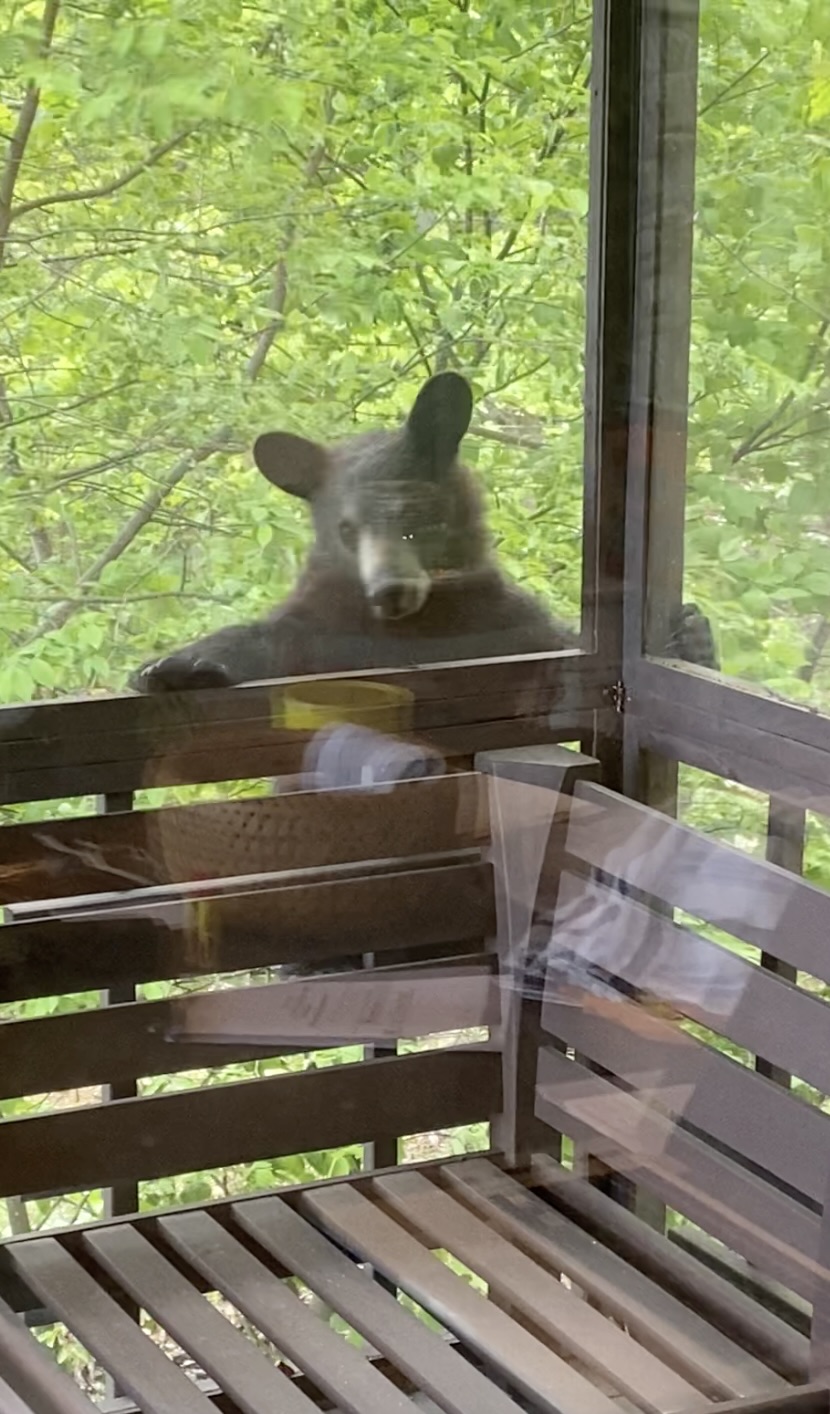Bear Safety
Keep Wintergreen Wild
Wintergreen is a Bear Smart community. This means we strive to eliminate situations where bears learn that humans’ homes and vehicles can be a food source. There are a few simple rules:
- No bird feeders from April 1 – December 1
- Never leave food or trash outdoors
- Be aware bears can access homes through unlocked doors and windows
- Always lock vehicles. Bears know how to open car doors
Black bears are highly intelligent animals with an incredible sense of smell, detecting potential food sources over great distances. Bears are always on the hunt for easy calories; tempting aromas of dumpsters, garbage cans, or kitchens can lead to unfortunate situations. When bears associate humans, homes, or garbage with food, they will return again and again thus changing their natural behavior around people.
Once a bear is conditioned to eat garbage and other unnatural foods, the solutions all too often are fatal to the bear. Relocation can be unsuccessful, dangerous, and expensive, leaving an unfortunate solution of euthanizing the “problem” bear.
Bears will not change their tendency to seek out easy meals so we must change our behavior. Make it your responsibility to make Wintergreen safer for human and bear residents by following the Bear Smart Community Rules.
If a bear is threatening, persistent, or aggressive call Wintergreen Police at non-emergency number: 434-325-1106.
For emergencies call 911.

Bearproof Your Property
Make sure bear attractants are properly stored.
The following items attract bears:
• garbage cans
• pet food stored outside or deliveries on your porch
• compost piles
• bird feeders/wildlife feeders
• BBQ grills – clean after each use
• petroleum products
• fruit/nut trees
• perfumed items (soap, suntan lotion, deodorant, etc)
If a bear visits your birdfeeder during the winter months, remove the feeder for at least 2 weeks. If the bear visits your feeder again after removing the feeder, remove the birdfeeder permanently.
If You See A Bear At Your Home
- Stay Calm. Remain calm and don’t panic. Often the bear is simply looking for food and will move on if it finds nothing to eat.
- Keep Away. Keep away from the bear and go inside and bring children and pets indoors. Shut all accessible windows.
- Don’t Approach. Never approach the bear and do not run away. Don’t act submissively by crouching down or whispering.
- Warn Others. Warn others of the bear’s presence, without yelling.
- If the bear climbs a tree, keep people and pets away. When things quiet down the bear will come down and leave. Once the bear is safely out of the area, check the area to ensure there are no attractants available.
About Bears When Hiking or Cycling
Do not surprise a black bear:
- Hike in a group, on established trails during daylight. Most bears will leave an area once aware of your presence.
- Keep children close and within sight.
- Dog safety – Your dog should be on a leash and never left unattended. Do not use retractable leashes as they allow dog to run as if charging toward the bear.
- Use extra caution when hiking near rushing water, into the wind or in the rain. A bear may not be able to hear or smell you coming.
- Be alert! – Watch for signs such as tracks, droppings, diggings, torn-up logs and scratched trees, which may indicate a bear is nearby.
- Use caution near natural bear foods – Blueberries, fruit trees, and dead animals are examples of food sources. If you come upon these items, use caution.
- Watch for cubs – Bears become aggressive if they feel their young are threatened. Never get between a mother and her cubs.
- Stay calm – Think ahead and plan how to respond if you should encounter a bear.
- Don’t run – A black bear can easily outrun you. Running may also trigger an attack response. Pickup small children and stay in a group to make yourself less vulnerable.
- Leave the area or make a wide detour – If you cannot leave, wait until the bear moves out of the way and ensure the bear has an escape route.
- The bear may approach or rear up on its hind legs – Bears are curious; it is most likely trying to catch your scent. This is not necessarily a sign of aggression. Back away slowly.
- Don’t drop or throw objects, clothing, or food to distract the bear – Rewarding a bear for aggressive behavior will increase the likelihood that it will repeat that behavior.
- Watch for aggressive behaviors – A bear may display aggression in the following ways: swing its head from side to side, make vocalizations such as huffs, snorts, whoops or moans, displaying teeth or claws, jaw popping, swatting at the ground, staring with eye contact, panting, or laying its ears back. These behaviors indicate the bear is stressed, acting defensively, and/or asking for more space. This is the most common kind of black bear aggressive encounter.
- Cyclists! – Your speed and quietness can put you at risk for sudden bear encounters. Slow down through shrubbed areas and when approaching blind curves. Be alert and always look ahead.
Living With Bears at Wintergreen
Wintergreen’s black bears are out and about. Learn more about these amazing animals and how to keep them wild.
The video on the right is Matt Overstreet’s presentation on Virginia’s rising American black bear population and how to safeguard your property from hungry bears.
For more information
- The Virginia DWR website has an entire section of their website devoted to black bear biology and management practices.
- Guidelines from WTGPOA.
- bearwise.org
For emergencies call 911.
